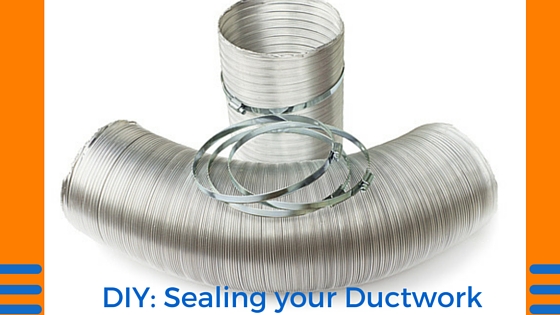Sealing Air Conditioning Ductwork
September 21, 2015 9:46 am
Ductwork is often overlooked when people are looking for energy-saving ways to keep cool indoors. Yet, one of the most important systems within a home or building is the air duct system. Having properly or poorly insulated and sealed air ducts can either make or break your energy bill and comfort level.
Why a Good Seal Matters
The air ducts create a network of tubular passage ways by which warm or cool air travel to each climate-conditioned room. When ducts located in unconditioned spaces, such as a crawl space or attic, are improperly sealed, a great deal of cool air and energy are wasted. Instead of delivering the air conditioning to the rooms being used, the cool air leaks into the attic, crawl space or other unused area. To work around this inefficiency, you must run the AC longer to achieve the desired temperature, which causes your energy bill to go up.
The Benefits of Properly Sealed Ductwork
- Save Money. The efficiency of a heating and cooling system can decrease by 20 percent if leaks are present in the air duct system. Properly sealing and insulating air ducts often ends up paying for itself with energy savings accrued.
- Increase Comfort. Many older homes and buildings have a room that’s too hot in the summer and too cold in the winter. No matter the age of the building, proper duct sealing and insulation can eliminate this common comfort problem.
- Improve Indoor Air Quality. Allergy and asthma problems are aggravated by the dust and insulation particles, and household chemicals that enter an improperly sealed duct system. You can reduce the risk of these indoor pollutants from circulating inside while improving air quality with well-sealed air ducts.
- Promote Safety. Sealing any leaks that exist in your ductwork protects everyone inside from the risk of back drafts. A back draft is created when carbon monoxide from gas appliances is drawn into the air duct system by way of a leak instead of out through the ventilation system.
- Be Environmentally Friendly. The less energy used inside a building or home, the less fossil fuel that’s needed to produce it. Simple changes such as sealing and insulating ductwork can positively impact the environment as much as it benefits you indoors.
Tips for Sealing Ductwork
- Begin by sealing off small leaks with mastic sealant, or heat-approved tape. Avoid using duct tape because it’s not durable or long-lasting.
- Gaps larger than 1/4 inch must first be bridged with drywall tape before they can be sealed with mastic sealant.
- Reconnect sections that have come apart and search for any small holes that need to be repaired.
- Insulate ducts that can be easily accessed in the basement, attic or crawl space.
- Consider having old ductwork professionally replaced or repaired. An energy-efficient air duct system will vastly improve the comfort inside and save you money throughout the entire year.
Ductwork You Can Rely On
Minor duct repair work is often taken on as a do-it-yourself project. Simple procedures like sealing a small gap can be done as a DIY, but it’s always wise to consult a qualified professional in case there are repairs or changes needed to your duct system. A professional in the HVAC industry will have the proper tools and supplies, as well as the expertise required to safely insulate and seal ductwork. The result will be a cooler, more comfortable indoor climate that works efficiently and saves you money.
Categorised in: Uncategorized
This post was written by Air Conditioning Service, Inc.


Comments are closed here.